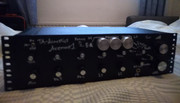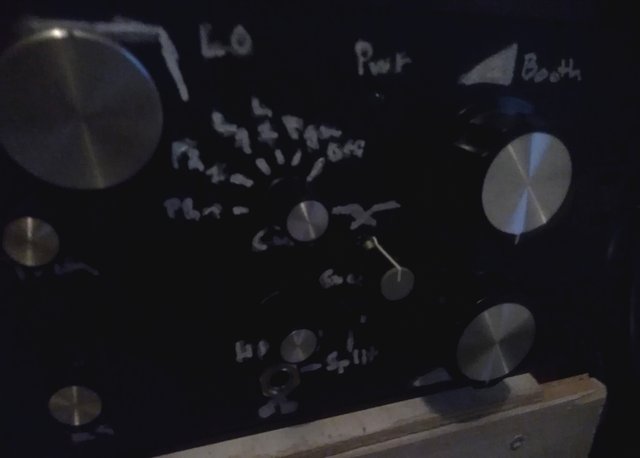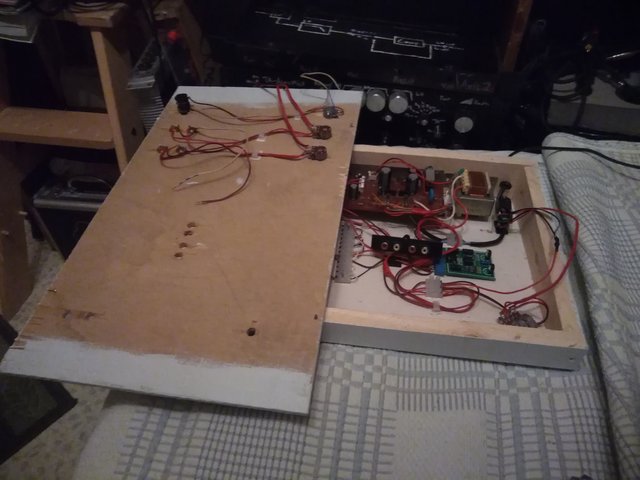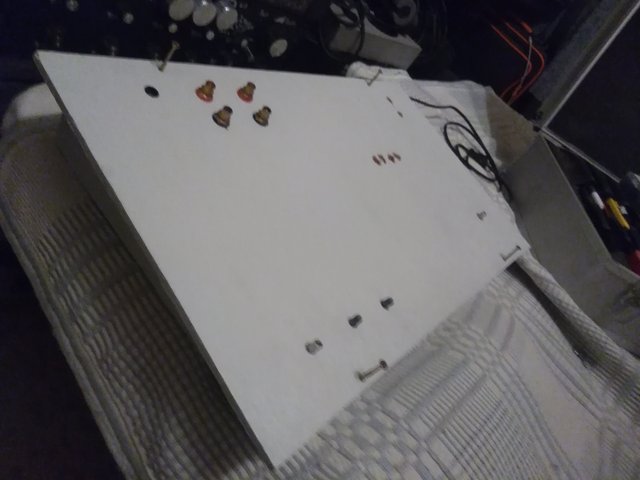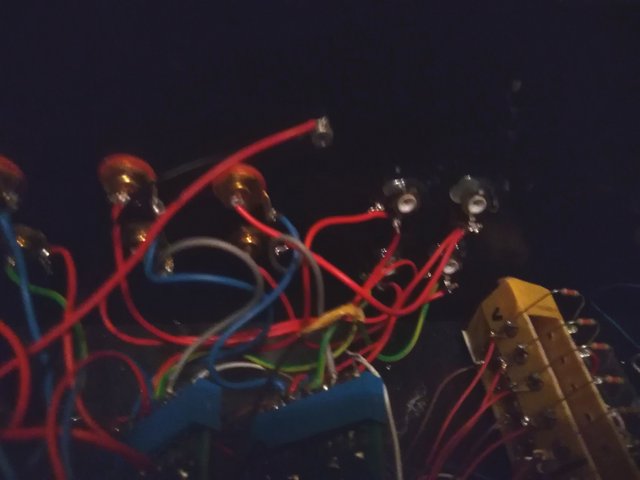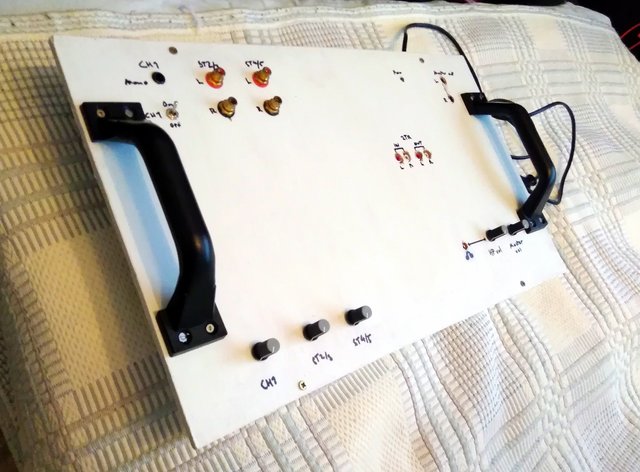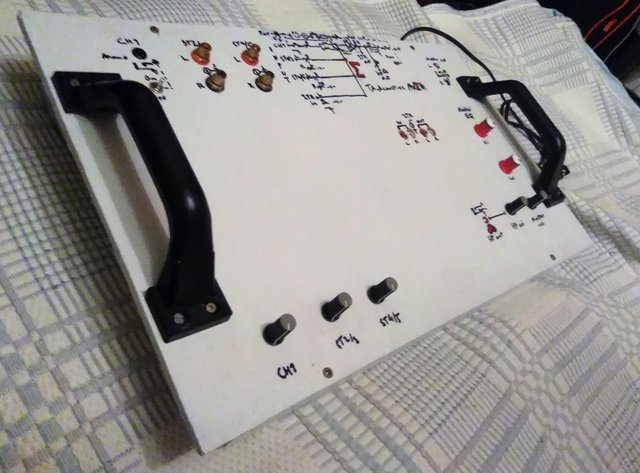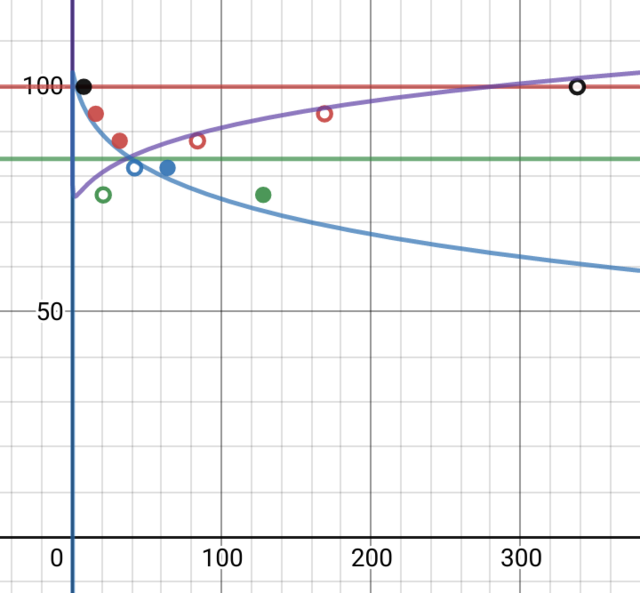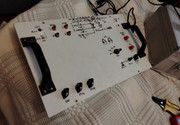The smaller 2ch mixer I built earlier from leftover parts and then scrapped to build the xover had me thinking so I rebuilt it with some modifications.
First I assembled a roughly 6-7RU (300mm) slanted 19" case from an amplifier project. The bottom is hardboard, sides are 18mm thick pine and the top panel is plywood.
I then attached a transformer and a power supply board (from an old tape deck), along with the mains AC wire which runs to the back panel via a screw terminal in case it needs to be modified to fit inside a rack. I also drilled a hole for the power button.
Then I wired a 12-pin screw terminal bus in parallel (stereo configuration) so there's 4 left, 4 right and 4 ground with L/R/gnd terminals which forms the summing bus (the L&R ground signals are summed). These are connected into preamplifier inputs via a bus connector. The preamp is a now discontinued Velleman K2572 universal stereo preamplifier kit I built earlier.
The preamplifier output is split into 2-track out and a 100kOhm stereo potentiometer which feeds two 6,3mm unbalanced master outs. The 2-track in/out uses a two pair RCA terminal, the input is connected to the summing bus.
The input channel section is passive, with a mono channel and 2 stereo channels. The mono channel uses a 6,3mm mono jack, the stereo channels have RCA connectors.
These are also connected to the summing bus, the mono channel uses an Y-split to L/R with 1kOhm resistors to maintain stereo separation between channels. The channel strips have 100kOhm potentiometers as volume control.
The PSU provides 30VDC for the preamp and 9VDC for the power on LED via ballast resistors.
The build is missing knobs atm, I'm also looking to add a headphone monitor section with PFL/master cue (this requires per-channel trim pots, a 2-pole 4-pos rotary switch, level pot and output jack) and possibly balance controls.
It could benefit from per-channel HPF/EQ and -20dB pad switch too, and metering.
Here's a pic of the internals with the PSU and summing bus/master section visible (you can also see the channel configuration wiring on the front panel) :
And a pic of the front panel in place :
Stuff I've added since is the power on LED (in the front panel) and panel markings etc.










![Soldering Iron Kit, 120W LED Digital Advanced Solder Iron Soldering Gun kit, 110V Welding Tools, Smart Temperature Control [356℉-932℉], Extra 5pcs Tips, Auto Sleep, Temp Calibration, Orange](https://m.media-amazon.com/images/I/51sFKu9SdeL._SL500_.jpg)























